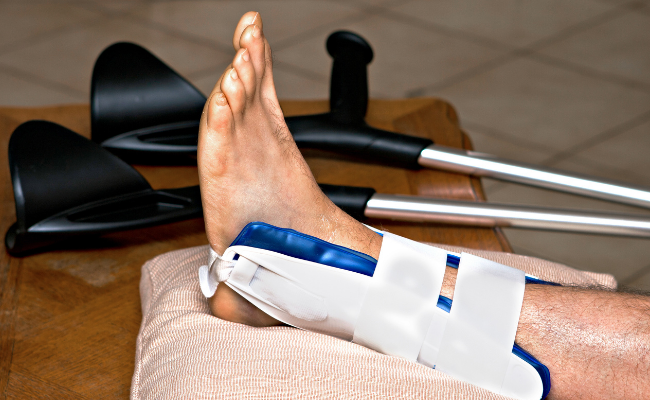How to Treat Broken Ankle?
- November 25, 2023
- No Comments

What is a Broken Ankle?
A broken ankle, technically referred to as an ankle fracture, occurs when there is damage or a break in the bones comprising the ankle joint, including the tibia, fibula, and talus. This complex structure forms a crucial link between the leg and foot. Ankle fractures vary in severity, impacting the joint's stability and function. Breaking multiple ankle joint bones, tibia, fibula, and talus, intensifies the injury, often requiring ankle surgery. Recovery from a broken ankle ranges from several weeks to two years, highlighting the variable duration and complexity of the healing process.
Why Does a Broken Ankle Occur?
Ankle fractures typically result from trauma or excessive force applied to the joint. Common causes include:
- Twisting or Rolling: Awkward twists or rolls of the ankle, especially during physical activities, can lead to fractures. This often happens during sports or uneven terrain.
- Impact Injuries: Accidents, falls, or direct blows to the ankle, particularly during sports or high-impact activities, may cause fractures. Car accidents or falls from heights are common scenarios.
- Osteoporosis: Conditions that weaken bones, such as osteoporosis, increase the risk of fractures with minimal force. Weakened bones are more susceptible to fractures during routine activities.
How to Identify a Broken Ankle?
Recognizing the signs and symptoms of a broken ankle is crucial for prompt and effective treatment. Common indicators include:
- Pain: Intense pain, especially with movement or weight-bearing, is a primary indicator of a possible fracture. The pain is often immediate and may be severe.
- Swelling: Swelling around the ankle is a common response to the injury. It occurs due to inflammation and the body's natural healing process.
- Bruising: Discoloration or bruising may appear due to blood vessel damage. The bruising can extend beyond the immediate area of the fracture.
- Deformity: In severe fractures, the ankle may look misshapen or out of alignment. Visual inspection can reveal abnormalities in the structure of the ankle.
- Limited Range of Motion: Difficulty moving the ankle or bearing weight on the affected leg is indicative of a fracture. The range of motion is often restricted due to pain and swelling.
Treatment Solutions for a Broken Ankle:
- Medical Evaluation: Seeking immediate medical attention is crucial for a proper diagnosis. X-rays and imaging tests help assess the severity and type of fracture, guiding the treatment plan.
- Immobilization: Stabilizing the ankle is a fundamental aspect of treatment. This often involves the use of a cast, brace, or splint to prevent movement during the initial healing process.
- Elevation: Keeping the injured ankle elevated helps minimize swelling and promotes healing. Elevation is an essential component of the R.I.C.E. (Rest, Ice, Compression, Elevation) protocol.
- Pain Management: Over-the-counter or prescription pain medications can alleviate discomfort, making the recovery process more tolerable.
- Physical Therapy: Once the initial healing phase is complete, physical therapy becomes instrumental. Therapists guide patients through exercises designed to restore strength, flexibility, and functionality to the ankle.
- Surgical Intervention: In cases of severe fractures, misalignments, or complications, surgical intervention may be necessary. Surgery aims to realign and stabilize the broken bones for optimal healing.
Benefits of Comprehensive Broken Ankle Management:
- Faster Healing: Prompt and appropriate treatment promotes faster healing, reducing the overall recovery time. Early intervention prevents delays in the healing process.
- Reduced Complications: Adequate immobilization and care minimize the risk of complications such as malunion (improper healing) or nonunion (failure to heal).
- Restored Functionality: Physical therapy plays a crucial role in restoring the normal range of motion and strength to the ankle. This enables individuals to regain functionality and return to regular activities.
- Pain Relief: Proper pain management strategies ensure a more comfortable recovery process. Pain relief is essential for maintaining a positive mindset and encouraging adherence to treatment plans.
- Prevention of Recurrence: Understanding the causes of the fracture, especially in the context of sports or lifestyle factors, allows for preventive measures to avoid future injuries. This may include modifying activities, wearing supportive footwear, or engaging in targeted exercises to strengthen the ankle.
Comments (0)